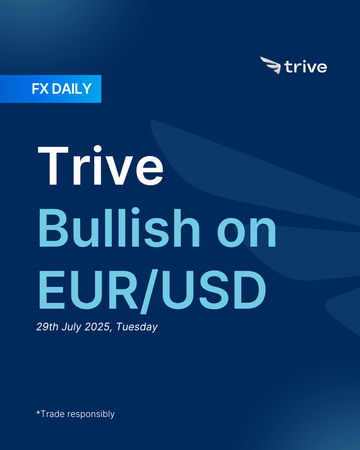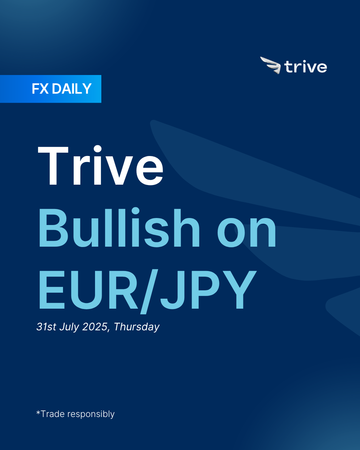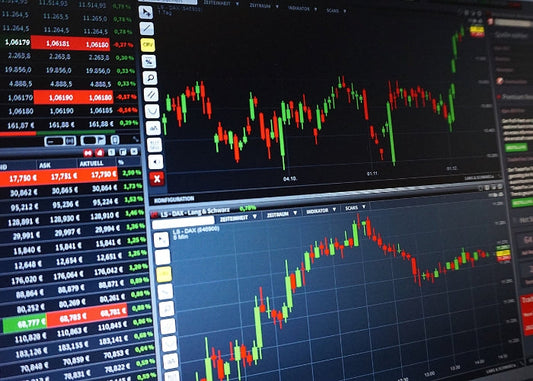FX Daily: Trive Bullish on USD/JPY

USD/JPY remains bullish as near-term drivers favor the Dollar. Solid US services data, strong labor market, and sticky inflation keep the Fed on hold, supporting USD. Meanwhile, JPY stays weak amid soft Tokyo CPI, cautious BoJ signals, and political uncertainty. Though a US-Japan trade deal eased some risks, Japan’s domestic outlook remains too soft for a rate hike. Without a hawkish BoJ shift, USD/JPY is likely to stay supported.
JPY: Political pains
The Japanese Yen went through a highly volatile week, driven by a shift from domestic political uncertainty to the announcement of a major trade deal with the United States. The currency started the week as the top performer among G10 currencies, with USD/JPY falling below 147.00 after the ruling LDP-Komeito coalition lost its majority in the Upper House election. Markets initially took comfort in Prime Minister Ishiba’s commitment to stay in office, which helped ease fears of political instability.
However, the focus quickly shifted mid-week when the US and Japan announced a significant trade agreement. The deal imposed a 15% tariff on Japanese goods, avoiding the previously threatened 25%, and included Japan’s pledge to invest $550 billion in the US, purchase American LNG, and boost defense spending with US firms. This announcement sparked a strong rally in Japanese equities. The Yen’s response was more complicated. On one hand, removing a major trade risk led to speculation that the Bank of Japan might be in a better position to raise interest rates, which initially strengthened the Yen and brought USD/JPY down to around 145.80. On the other hand, this view was short-lived.
As the weekend approached, that optimism faded. Tokyo CPI data for July came in weaker than expected, with both the headline and core readings dropping below 3.0% for the first time since March. This gave markets a clear reason to doubt any imminent BoJ rate hike. Adding to that, a Bloomberg report cited BoJ sources saying that while a rate hike is possible this year, more data would likely be needed by the end of 2025 to make such a decision. This softer tone reversed the earlier Yen strength and pushed USD/JPY back toward 148.00.
Early in the week, Bank of Japan sources said the election results wouldn’t significantly influence policy. Following the trade deal, BoJ Deputy Governor Uchida noted that its effects were largely in line with the bank’s earlier assumptions, which also helped to calm some of the market’s initial enthusiasm for policy tightening.
Political instability also played a role throughout the week. Though Prime Minister Ishiba’s promise to stay on initially reassured markets, rumors of his potential resignation emerged mid-week. He publicly denied them, but the uncertainty added to the Yen’s volatility. Overall, the Yen was pulled in multiple directions—initial strength from political clarity and trade optimism gave way to weakness driven by softer inflation data and a more cautious message from the BoJ.
We maintain a bearish outlook on the Japanese Yen in the near term. The combination of weaker Tokyo CPI, cautious BoJ commentary, and lingering policy divergence with the Fed keeps USD/JPY supported. While the recent trade deal with the US may have reduced external risks, it hasn’t meaningfully changed Japan’s domestic inflation or rate outlook. Markets have quickly unwound any earlier optimism for near term tightening, and with the BoJ signaling it needs more data into 2025, it’s hard to see a catalyst for sustained Yen strength right now.
However, risks are not one sided. Thursday’s BoJ meeting will be important, if policymakers strike a more hawkish tone or hint at earlier action, we could see a sharp short covering rally in the Yen. Political risks around the election outcome also remain in play, and a stronger than expected showing by the ruling coalition could support the currency. For now, though, we believe the balance of risks still leans toward further Yen weakness.
USD: Big week ahead
The US Dollar ended a volatile week lower, as a major breakthrough in trade negotiations with Japan was offset by mixed domestic economic data and continued pressure on the Federal Reserve. The DXY started the week on a weaker note, slipping below 98.00. Sentiment picked up mid-week after the announcement of a landmark US Japan trade deal, which helped ease fears of a global trade war ahead of the August 1st tariff deadline. However, the dollar couldn’t hold on to any meaningful gains. Conflicting reports about a potential EU deal and a sharply mixed US PMI report showing a booming services sector alongside a contracting manufacturing sector added to the confusion about the economic outlook. President Trump’s ongoing public campaign for rate cuts, including a visit to the Federal Reserve and his comment that he “got the impression” a cut was on the way, kept the focus on policy uncertainty. By the end of the week, the dollar was trading near 97.60, ending lower overall, as markets weighed the reduced geopolitical risk against signs of a divided US economy and an unpredictable policy path.
The S&P Global Flash PMI report for July gave mixed signals. The Services PMI rose sharply to 55.2, much higher than the expected 53.0, pointing to strong growth. In contrast, the Manufacturing PMI unexpectedly dropped into contraction at 48.5, compared to expectations of 52.7. The overall composite PMI rose to 54.6, but the report highlighted that tariff related price pressures were growing even as third quarter growth appeared solid.
The labor market showed resilience, with Weekly Initial Jobless Claims falling unexpectedly to 217,000, suggesting a tight job market with low layoff rates.
In contrast, data from the housing and business investment sectors was weaker. June Existing Home Sales dropped more than expected, falling 2.7% to a 3.93 million annualized rate. The National Association of Realtors pointed to record high prices and low supply as key challenges. Meanwhile, June Durable Goods Orders fell 9.3%, which was less than feared, but the more closely watched nondefense capital goods orders excluding aircraft fell by 0.7%, indicating softening business investment.
On the policy front, President Trump kept up his criticism of the Federal Reserve, blaming Chair Powell for problems in the housing market and calling for deeper rate cuts. The pressure increased with Trump’s unusual visit to the Fed on Thursday. Afterward, Trump said he “got the impression” from Powell that a rate cut might be coming, which briefly pushed down Treasury yields. With the Fed in its premeeting blackout period, no official comments were made, though Treasury Secretary Bessent said Trump would not fire Powell but supported an internal review of the Fed’s nonmonetary functions. Despite the political noise, market pricing for Fed policy stayed relatively steady, with expectations pointing to about 45 basis points of rate cuts by the end of 2025.
In trade news, the week’s biggest development was the US Japan deal, which included a 15% reciprocal tariff on most goods lower than the previously threatened 25% and a commitment from Japan to invest $550 billion in the US. This was seen as a major step in reducing global trade tensions.
Talks with the EU remained uncertain. While midweek reports hinted at a deal similar to the Japan agreement, White House officials downplayed these stories as speculation. President Trump later said there was a “50 50 chance” of a deal. Meanwhile, EU diplomats confirmed they had prepared a €93 billion retaliation package in case negotiations broke down.
Other trade moves included smaller agreements with the Philippines and Indonesia at a 19% tariff rate. Trump struck a tougher tone on Canada, suggesting that it might face tariffs without any negotiations. As the August 1st deadline approaches, many countries are under pressure to finalize their deals.
Market sentiment improved midweek after the announcement of the US Japan trade deal, which helped reduce the fear of a global tariff standoff. This created a more positive environment for equities, though it didn’t provide lasting support for the dollar. The highly mixed US PMI data tempered investor enthusiasm. The sharp difference between the strong services sector and the weak manufacturing numbers raised questions about where the economy is really headed, keeping investors cautious and limiting the dollar’s recovery.
In the near term, the USD may hold its ground or even extend gains, supported by a resilient US economy, consumer confidence has been rising since May, PMIs remain in expansion, unemployment is stable, and inflation remains sticky .. leaving the Fed in no rush to cut rates. But cracks are starting to show already, the Manufacturing PMI unexpectedly dropped into contraction at 48.5, compared to expectations of 52.7.
The recent Dollar strength looks more like a temporary bounce than a lasting reversal. Earlier weakness came from a reallocation away from US assets, and while strong US returns have paused that move, the underlying pressure remains.
Uncertainty is still high, especially around tariffs, with no clarity on how far or fast they’ll go. Political noise, including talk of replacing the Fed Chair, adds to investor caution. Inflation data was mixed, but supports the view that the Fed may still cut rates later this year. All of this keeps the broader USD outlook tilted to the downside.
All that being said, next week is packed with high-impact risk events. The FOMC meeting on Wednesday could have a major influence on the markets. Currently, there’s a 95% probability priced in for a hold, with only a 5% chance of a rate cut. If the Fed decides to hold, the market’s focus will shift to their rhetoric and forward guidance. On the off chance they opt for a cut, which is highly unlikely, it would be a bearish surprise and further reinforce our bearish outlook.
Following that, Friday brings the NFP and ISM Manufacturing PMI, both of which will help shape the economic outlook for the US dollar. We’re looking for weaker prints for both to support our bias. However, if there’s a strong bullish surprise in either, the USD could continue its recent rally.
 USD/JPY 4H
USD/JPY 4H
Disclaimer
This material is provided for informational purposes only and does not constitute financial, investment, or other advice. The opinions expressed in this material are those of the author and do not necessarily reflect the views of Trive International. No opinion contained in this material constitutes a recommendation by Trive International or its author regarding any particular investment, transaction, or investment strategy. This material should not be relied upon in making any investment decision.
The information provided does not consider the individual investment objectives, financial situation, or needs of any specific investor. Investors should seek independent financial advice tailored to their individual circumstances before making any investment decisions. Trive International shall not be liable for any loss, damage, or injury arising directly or indirectly from the use of this information or from any action or decision taken as a result of using this material.
Trive International may or may not have a financial interest in the companies or securities mentioned. The value of investments may fluctuate, and investors may not get back the amount they originally invested. Past performance is not indicative of future results.
For more information about Trive International, please visit http://trive.com/int
Additional Information
Investing involves risk, including the potential loss of principal. Diversification and asset allocation strategies do not ensure a profit or guarantee against loss. The content in this material is subject to change without notice and may become outdated or inaccurate over time. Trive International does not undertake any obligation to update the information in this material.
By accessing this material, you acknowledge and agree to the terms of this disclaimer. If you do not agree with these terms, please refrain from using this information.
कोई टिप्पणी नहीं
Home
Trive
TriveHub





0 टिप्पणियाँ